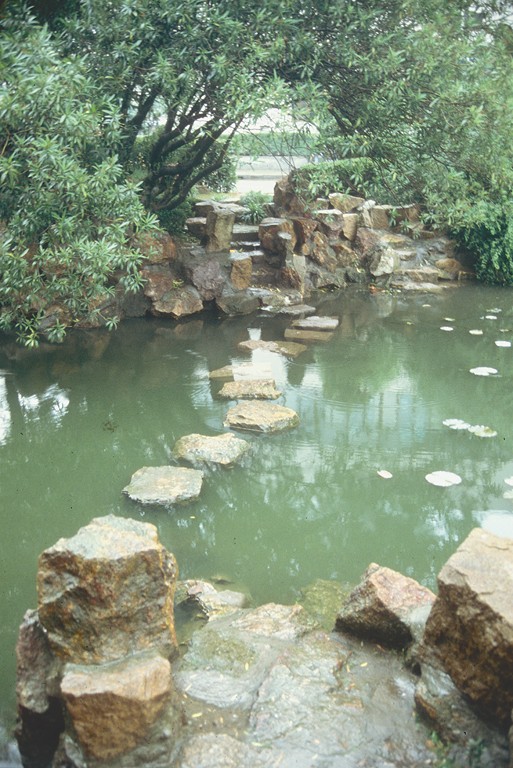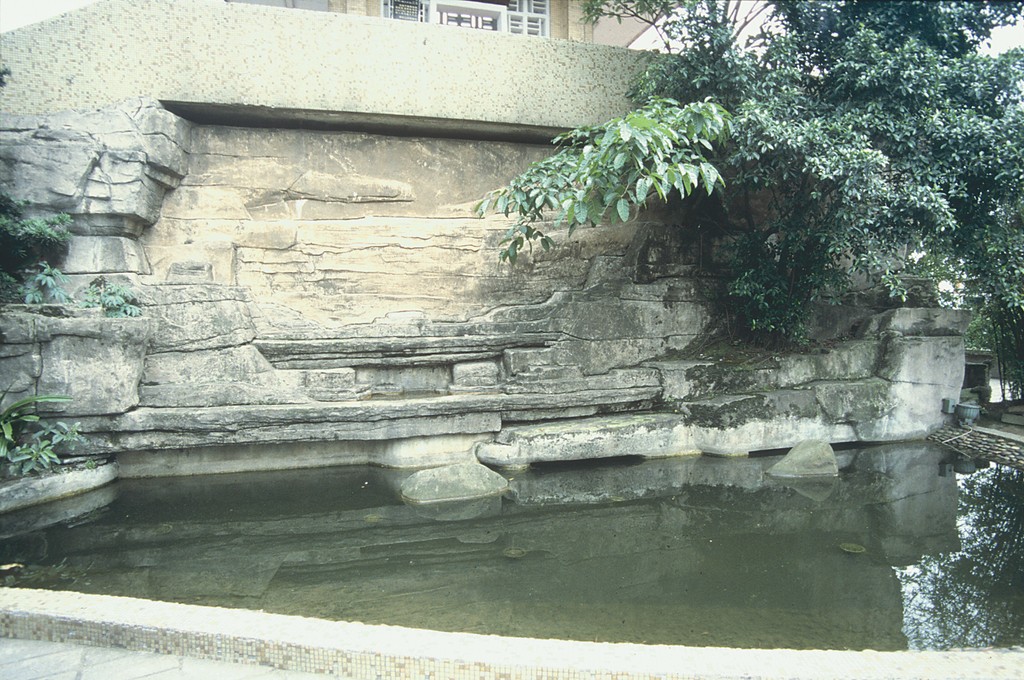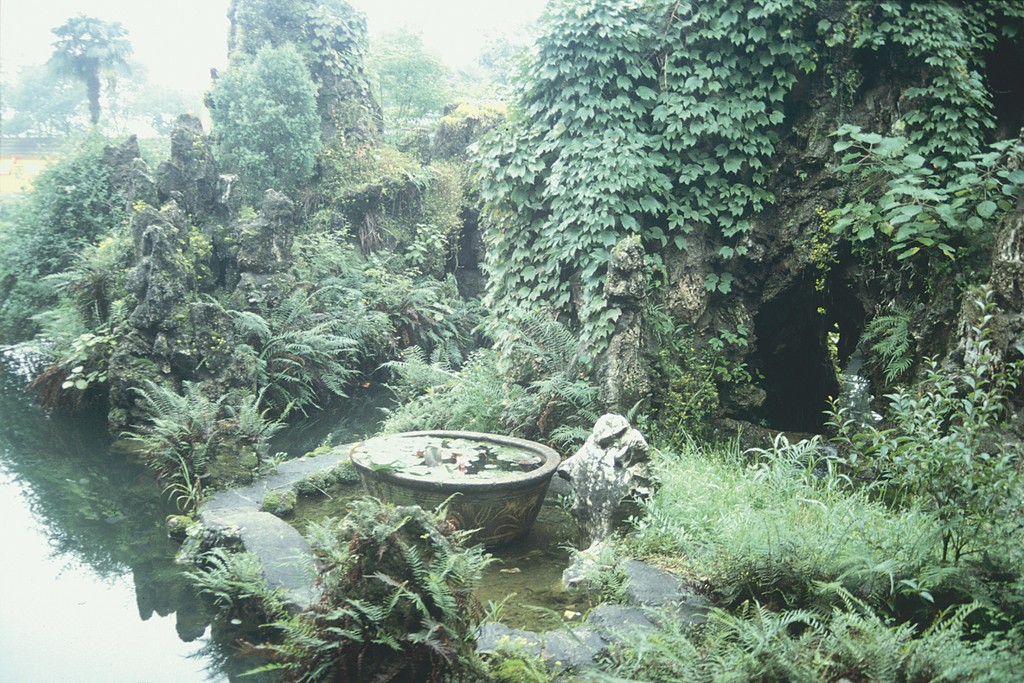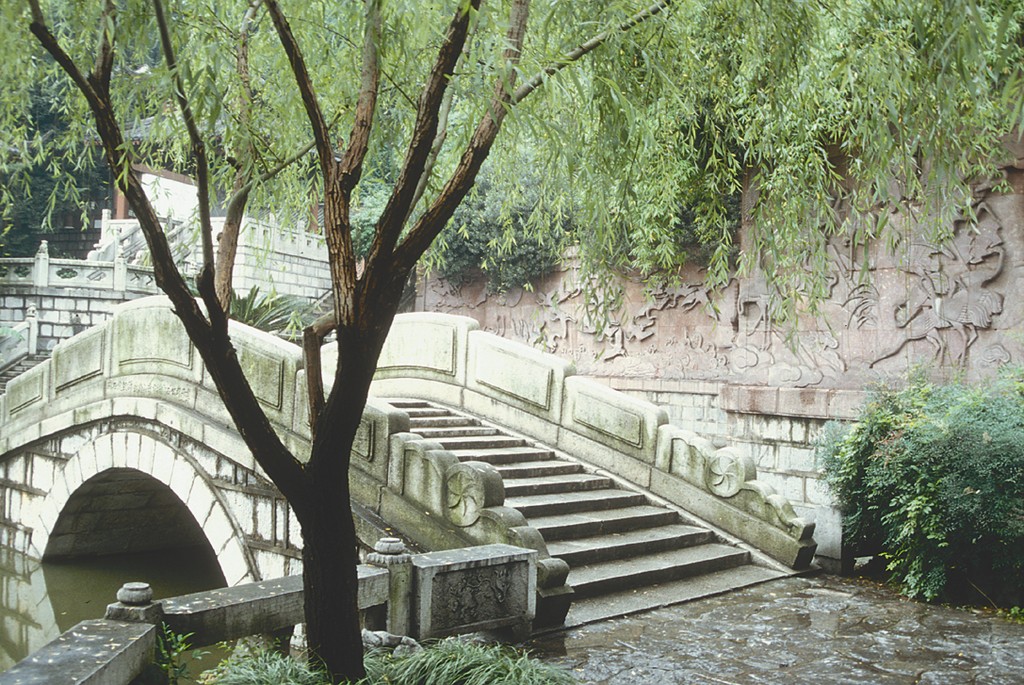Finding China

Many years have passed since I first saw pictures of China, but my desire to travel to the Giant of the Orient has never waned.
In recent years, in fact, that interest grew ever stronger as I watched all the new information emerging from China as it has slowly opened itself to the Western world. I’ve been particularly fascinated by documentaries on the Yangtze River and The Great Dam that China is building to manage its floodwaters.
This past spring, I visited China to see its amazing gardens with my own eyes and travel down the Yangtze through the fabled Three Gorges and the Lesser Three Gorges. I went seeking inspiration and came back with more than my quota of thoughts on the mysteriousness and tantalizing vagueness with which so many Chinese gardens are put together.
GARDEN FORMS
Perhaps because they’re so unfamiliar to Western eyes, people – including many otherwise well-informed students in seminars I’ve taught – tend to lump Chinese gardens in with the much more familiar Japanese gardens in a general classification as Oriental or Asian gardens. Nothing could be farther from accuracy.
Before I move forward, I need to state that I am not an expert in this area of design. I am an ardent observer of these spaces, however, and have managed to learn a few things about Chinese gardens and their designers through the years. (I was accordingly pleased to find that my tour reinforced much of what I know about them!)
In general, Chinese gardens are built around three main components:
[ ] Architecture and Structure: The Chinese garden is almost always located in a courtyard or pavilion-type setting. Indeed, the only cases in which they break beyond the confines of walls is with imperial gardens or with the gardens of the wealthiest of the wealthy. Given the fact that walls are so dominant, the openings, gates, windows and wall copings all take on special significance.
|
Brave Old World Throughout my career, I’ve found that many things separate exceptional design professionals from average practitioners. For instance, a great many designers (and I count myself among them) have spent a tremendous amount of time studying the works of masterful designers, past and present. Study is one thing: In my opinion, curiosity is just as important, if not more so. Indeed, the most creative and inspiring designers I’ve ever seen have spent and are always spending an extraordinary amount of time looking at the world in which we live to derive ideas and inspiration. In this sense, you might say that “design education” is a matter of accumulating life experiences: By doing, exploring, tasting, experiencing and immersing one’s self in things that are different and exotic and foreign, we change and grow. My point is that the mere fact that you may have worked in design for 10 or 20 or however many years does not necessarily make you any better at your work. Instead, I believe that the only way to grow as a professional is to look outside your immediate frame of reference and embrace the world around you. Consider the photographs on display in the accompanying article: They come from places that are worlds away from the usual orbit or interests of Westerners – and they offer a means of exposing ourselves to new information, expanding our horizons as professionals (and people) and stretching our abilities to create good designs and produce quality work. One of the things I like about WaterShapes is the fact that it displays the works of many wonderful designers – Fallingwater by Frank Lloyd Wright, Katsura Rikyu in Japan and other projects from around the country and across the globe. I believe that this coverage shows us that there are infinite possibilities when it comes to creating garden spaces and using water within them. By looking to the unfamiliar, we see a variety of ways to organize and manipulate spatial relationships and all-new ways of using materials. Chinese gardens are in fact more varied and complex than any single article could hope to capture, but my hope is that you’ll find one small thing to take back to your own projects or see one small strategy these gardeners and artists used in establishing the atmosphere of their spaces. Beyond that, I’m hoping there’s enough to go on that you’ll be curious and inspired enough, as I was, to hop on a plane and go see these gardens with your very own eyes. — R.A. |
In most of these gardens, the paving also plays a prominent role, with highly detailed work in a variety of geometric patterns. The paving consists in many cases of small bits of material – seconds, leftovers, discards, scraps from other construction – that the craftspeople have woven together in unique and eye-catching ways. Space permitting, the seating areas are typically set under roofs and/or beneath stand-alone pavilions. The higher the social status of the resident, the more elaborate and ornate are the materials and craftsmanship of these structures.
Everything revolves around these limiting architectural features in the gardens of the middle and upper classes – a sharp distinction from Japanese gardens, for example, where borrowed views of distant landforms are often a defining visual component. (As I mentioned, only in imperial gardens were Chinese landscapes shaped with vistas in mind.)
[ ] Plant Selection: Plants in Chinese gardens are chosen to add structure and depth and accents in what can best be described as a supporting or background role. Some plants, for example, are chosen solely for their seasonal color and their roles in how the garden looks through each season of the year.
Among the plants chosen for these purposes in a great many classic Chinese gardens are bamboo, willow, pine, peony, mums and cherry.
[ ] The Rockwork: No Chinese garden could ever be complete without a stone or stone grouping that make up its rockery – the key, defining characteristic of the vast majority of classic Chinese gardens.
The importance of this feature cannot be overstated. These fantastically shaped stones, called T’ai Hu because most of the important ones come from a lake of that name, have been worn by time and the elements and are prized for what seem to Western eyes to be near-grotesque shapes. (On my trip, I spent a lot of time photographing these stones. This amused my hosts, who seemed puzzled that a Westerner would pay so much attention to their “rocks.”)
In the older gardens, the designers (many of whom also were painters) spent a good deal of time putting these limestone boulders into fantastic shapes and formations that brought strength and harmony to the garden spaces. The tradition is so powerful that the same attention is paid to rockeries in new gardens as well and how the stone formations work in relation to the rest of the space.
Without these stones, it seems, no space great or small, old or new, can truly be considered a Chinese garden.
WATERSHAPES
It is generally in association with the design and construction of the rockery that we find water in Chinese gardens.
In some cases, particularly in larger gardens of the very wealthy, Chinese gardens feature ponds of varying sizes and shapes. But many of the watershapes I saw were small, old and tired – and, unfortunately, many had fallen into disrepair.
Like much of a country where the streets are old and the paths are old and the soil has been worked for thousands of years, these watershapes had seemingly been worn away by years of accumulated time. Even so, the gardens are respectfully and diligently maintained – and the context and mood they create helped me visualize the role of water and hear what must have been its wonderfully naturalistic and evocative auditory contributions to these spaces.
As with most anything you study, an examination of Chinese gardens reveals a world unto itself, one filled with complexity, tradition and variety. The photographs reproduced below are intended as an introduction – one that will, I hope, lead you to further explorations on your own.
| This is the scene looking up at the summer pavilion at Yu Yuan in Shanghai (left). It was important in classic Chinese gardens that the spaces be composed as if they were paintings. Prominent here is a rockery that at one time had water flowing over part of it. The pictorial approach is also seen in the viewing pavilion and walkway near one of the larger ponds at Yu Yuan (left middle). Just as picturesque is a unique patterning in the paving that gives the impression of some form of living creature (right middle). This is unusual: Most classical paving takes on basic geometric shapes. More typical are the fantastic T’ai Hu stones such as there were prized for their incredible (and almost grotesque) formations (right). |
| At left is a courtyard garden at the Chongqing Folk Culture Village. The rockery serves as a dominant focal point. In my observation, no one seems to have much objection to pea-green water. I was consistently impressed by the kind of emphasis Chinese garden designers placed on T’ai Hu stones. The effect can best be described as placing the rockery in such a way that it will command and receive its proper respect. A contemporary fountain at the city overlook in Chongqing was typical of many “modern” watershapes in China in that it didn’t work (right). During my visit I saw about 40 such fountains, and only two were actually working. |
| Chinese gardeners certainly took inspiration from their natural surroundings. This Temple (at left) sits in a cliff face along the Yangtze River (A) and unfortunately will be inundated when The Great Dam – the most expensive construction project in world history – is completed and the Yangtze rises behind it. The Chinese government is relocating some of these treasures, but most will be lost in the flooding. Such a loss of heritage is breathtaking even compared to the awesome challenge of relocating millions of people and losing some of the country’s richest farmland. Views such as this (right) will be lost when the dam is complete. All the waterfalls will be gone, most of the cliff face will be submerged and the entire area will become part of an extensive system of lakes. |
| Yue Yang Mansion a fine example of a classical Chinese structure that features both a house and a garden. This is a typical rockery and waterfeature, but note that the classic Chinese garden was so much about stone that this greenery would never have been allowed to overtake the rockery in this way. |
| The Yellow Crane Tower in Wuhan is part of one of the most famous gardens in China – the place where the great poet Li Po went to compose his most famous works (left). Looking down from Yellow Crane Tower into the main pavilion area, you have the opportunity to see Chinese gardeners’ approaches to elevation changes, water use, structures, garden rooms, T’ai Hu stones and plant selection (left middle). This red granite sculpture at Yellow Crane Tower is know as the “Returning Cranes” – and took ten sculptors more than 30 months to complete (right middle). It forms the perfect foil for this rounded Chinese bridge (right). |
| We see a quiet simplicity in the pavilion at Longting Park (left). Notice how the designer wants you to perceive the composition as though it was a painting and how either the bridge or the lotus serves as the compositional foreground. At right is a typical garden entrance guarded by Fu Dogs. The space may look stark at first glance, but there’s a distinct beauty in its simplicity. |
| Chinese garden designers excel at building these wall openings and staging focal points for observers (left). Here at Riverside Park in Kaifeng and elsewhere, this conjures not only the interest in the wall itself, but inspires an attraction that pulls you into the scene (right). |
| At Kaifeng (left), we see an example of the ancient placement of T’ai Hu stones and the contemporary fountain, with what we would consider a more Western planting scheme. Again, everything seems to go together but the fountain is/was not working. I saw this combination many times in China: an older stone formation in the background with a contemporary fountain piece in the middle of a pool. Regrettably, neither new waterworks nor old were in working order. At right is a contemporary watershape (just a year old) on the grounds of Henan University in Kaifeng. I found no skimmer nor any system that seemed to be intended to make the water move in any way – and again, the green water didn’t seem to bother anyone. Most Americans would see this as an eyesore, but those I spoke with did not see or find any fault. In this and in so many other ways, Chinese gardens are simply “different” from what we expect to the point that they defy many of the horticultural and aquacultural beliefs we teach and follow here. In some places, for example, I found Koi ponds that seemed to lack any filtration or circulation system – once more to nobody’s distress. All of the watershapes I observed were this way, except for the pools in front of the Great Hall across from Tiananmen Square, where the fountain was running – and even there the water clarity was just fair. |
Rick Anderson has been a specialist in watergardens, streams and ponds for 23 years. After working for many years in South Carolina and as a consultant for the past year in Nebraska, he recently returned to Ohio, where his watershaping career began. In returning to familiar environs, he says he has been pushed, prodded and inspired to continue exploring new territory when it comes to his unique brand of naturalistic water design. He’s active as a designer and consultant and works as the lead designer/builder in stone and water for Lake Cable Nursery in Canton, Ohio. Anderson is currently working toward the reforming of the Whispering Crane Institute, an industry think tank.





























